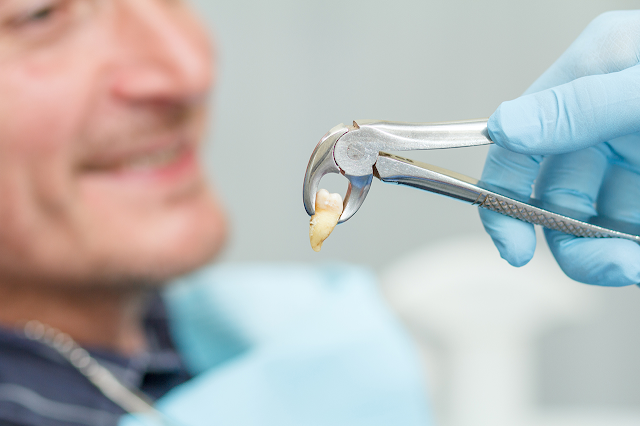Here is a general overview of the tooth extraction process:
Examination: Your dentist or oral surgeon will examine your teeth and take x-rays to determine the best course of action for the extraction.
Anesthesia: Before the extraction, your dentist or oral surgeon will administer anesthesia to numb the area around the tooth is removed. Depending on the complexity of the extraction and your individual needs, you may receive local anesthesia to numb the area around the tooth, sedation to help you relax, or general anesthesia to put you to sleep during the procedure.
Extraction: The dentist or oral surgeon will use special instruments to loosen the tooth in the socket and gently remove it from the jawbone. If the tooth is impacted or difficult to remove, the dentist or oral surgeon may need to make an incision in the gum tissue to access the tooth.
Stitches: If the extraction requires an incision, the dentist or oral surgeon may use stitches to close the incision.
Recovery: After the extraction, you will be given instructions on how to care for the extraction site to promote healing and reduce the risk of infection. You may also receive pain medication or antibiotics as needed.
It's important to follow your dentist or oral surgeon's instructions carefully after the extraction to ensure proper healing and to minimize the risk of complications. If you experience excessive pain, bleeding, or other unusual symptoms, contact your dentist or oral surgeon right away.
Tooth Extraction - Smoother Way
Tooth extraction in Charleston can be a stressful and uncomfortable procedure, but there are several ways to make it smoother:
Communicate with your dentist or oral surgeon: Before the procedure, communicate any concerns you have with your dentist or oral surgeon. They can answer any questions you may have and discuss the procedure and anesthesia options with you.
Choose the right anesthesia: Depending on the complexity of the extraction and your individual needs, you may receive local anesthesia to numb the area around the tooth, sedation to help you relax, or general anesthesia to put you to sleep during the procedure. Talk to your dentist or oral surgeon to determine the best anesthesia option for you.
Follow pre-operative instructions: Your dentist or oral surgeon will provide you with specific instructions to prepare for the procedure, including what medications to avoid and whether you should fast before the surgery. Following these instructions can help ensure a smoother procedure.
Practice good oral hygiene: Good oral hygiene can help prevent infection and promote healing after the extraction. Brush and floss your teeth regularly, and use a special mouthwash if recommended by your dentist or oral surgeon.
Take care of the extraction site: After the procedure, follow your dentist or oral surgeon's instructions carefully to care for the extraction site. This may include avoiding hard or crunchy foods, using ice packs to reduce swelling, and taking pain medication as prescribed.
By communicating with your dentist or oral surgeon, following their instructions, and taking good care of yourself after the procedure, you can help make the tooth extraction process smoother and more comfortable.

Comments
Post a Comment